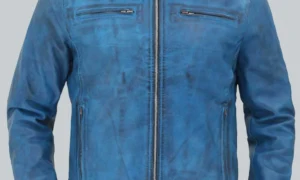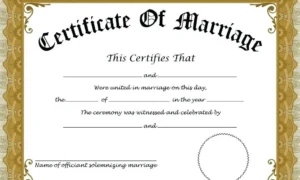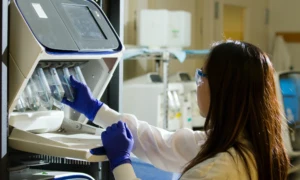Molluscum Contagiosum: Overview and Treatment
Molluscum contagiosum is a skin condition caused by a virus that causes small, raised bumps on the skin. These bumps can be pink, white, or skin-colored and usually have an indentation in the center. It is most common in children, but can affect people of any age. The virus is spread through direct contact with someone who has it, or by sharing contaminated objects like towels or toys. It can also be spread through sexual contact. In most cases, molluscum contagiosum will go away on its own within a few months.
In some cases, however, treatment may be necessary to help speed up recovery and reduce the risk of spreading it to others. Treatment options include topical creams to reduce inflammation and irritation caused by scratching (which can spread the virus), laser treatments to destroy the affected cells (though this can cause scarring), or cryotherapy treatments to freeze off the bumps. These treatments may need to be repeated until all of the bumps are gone.
It is important for people who have molluscum contagiosum to take steps to prevent spread of the virus to others. This includes washing hands often and avoiding touching or scratching affected areas; wearing loose clothing that covers the affected area; keeping children from sharing personal items like towels; not engaging in sexual activity until it has cleared up; and cleaning any shared surfaces like gym equipment or pool decks regularly.
Symptoms of Molluscum Contagiosum
Molluscum contagiosum is a viral skin infection that is caused by the molluscum contagiosum virus. The infection causes raised, pearl-like bumps on the skin. These bumps may be white, pink or flesh-colored and can range in size from 2 to 5 millimeters. In some cases, they can become inflamed or itchy. They usually appear on the face, neck, armpits, hands and lower abdomen. Other parts of the body may also be affected. The bumps are painless but in some cases they may become itchy or irritated due to scratching.
Diagnosis and Treatment of Molluscum Contagiosum
Molluscum contagiosum is a common, contagious skin infection caused by a virus. It is most commonly seen in children, but can affect people of all ages. The virus causes small bumps on the skin that are usually painless, but may be itchy or sore. The bumps may start out as small pimple-like bumps and then grow into larger dome-shaped lesions that have a central dimple or pit.
They may appear anywhere on the body but are most common on the face, neck, trunk, arms and legs. The diagnosis of molluscum contagiosum is usually made by physical examination and occasionally with the help of a microscope or skin biopsy to confirm the diagnosis. Depending on the severity of symptoms, treatment may include over-the-counter medications to reduce itching and inflammation as well as prescription medications to treat underlying infections.
In some cases, these medications may not be sufficient and it may be necessary to physically remove the bumps with cryotherapy (freezing), laser therapy or surgical excision. In addition to medical treatments, it is important for those infected with molluscum contagiosum to practice good hygiene such as washing hands regularly and avoiding contact with others who have similar lesions. To prevent further spread of infection it is also important to avoid scratching or picking at the lesions as this can cause them to spread further.
Home Remedies for Molluscum Contagiosum
Molluscum contagiosum is a skin condition caused by a poxvirus that results in raised, flesh-colored bumps. The bumps can range in size from 2-5 mm and usually appear on the trunk, arms, or legs. Mlb66 ir It is commonly seen in children, but adults can be affected as well. While molluscum contagiosum is not life threatening, it is highly contagious and can spread from person to person or through contact with contaminated items such as towels and clothing.
Although molluscum contagiosum is self-limiting and usually resolves without treatment within 6-12 months, there are home remedies that can help treat its symptoms and speed up recovery time. One of the most effective home remedies for molluscum contagiosum is to keep the affected area clean and dry. This helps reduce irritation and prevents further spread of the virus by discouraging bacterial growth and infection.
It’s also recommended to gently exfoliate the area with an over-the-counter scrub containing salicylic acid to reduce inflammation and help remove dead skin cells that may harbor the virus. Another home remedy for molluscum contagiosum is applying tea tree oil directly to the affected area using a cotton swab or cotton ball. Tea tree oil has natural antiseptic properties that can help reduce irritation and itching associated with the condition, as well as destroy virus particles on contact.
However, it’s important to dilute tea tree oil before use as it may cause skin irritation if applied directly at full strength. Finally, one of the best ways to prevent further spread of molluscum contagiosum is to avoid sharing towels or any other items that may have come into contact with infected areas of skin. Additionally, people who have been diagnosed with molluscum contagiosum should practice good hygiene by washing their hands regularly and avoiding scratching or picking at bumps as this can cause them to spread further.
Molluscum Contagiosum – An Overview
Molluscum contagiosum is a common skin condition caused by a virus. It is a contagious infection that usually appears on the face, neck, hands, and other areas of the body. It is characterized by small, flesh-colored bumps that can become itchy or sore. These bumps may be accompanied by a mild fever, rashes, and swollen lymph nodes in some cases. In most cases, molluscum contagiosum does not require treatment. However, if it causes discomfort or embarrassment due to its appearance, there are several methods to help treat it.
These treatments range from natural remedies such as tea tree oil and apple cider vinegar to medical treatments such as cryotherapy and laser therapy. Before attempting any kind of treatment for molluscum contagiosum it is important to consult a doctor or dermatologist first to determine the best course of action for your particular case.
Overall, molluscum contagiosum can be treated with either natural remedies or medical treatments depending on the severity of the condition and each individual’s preference. Stream east live While most cases do not require treatment, if you are suffering from discomfort due to this condition there are options available.








































